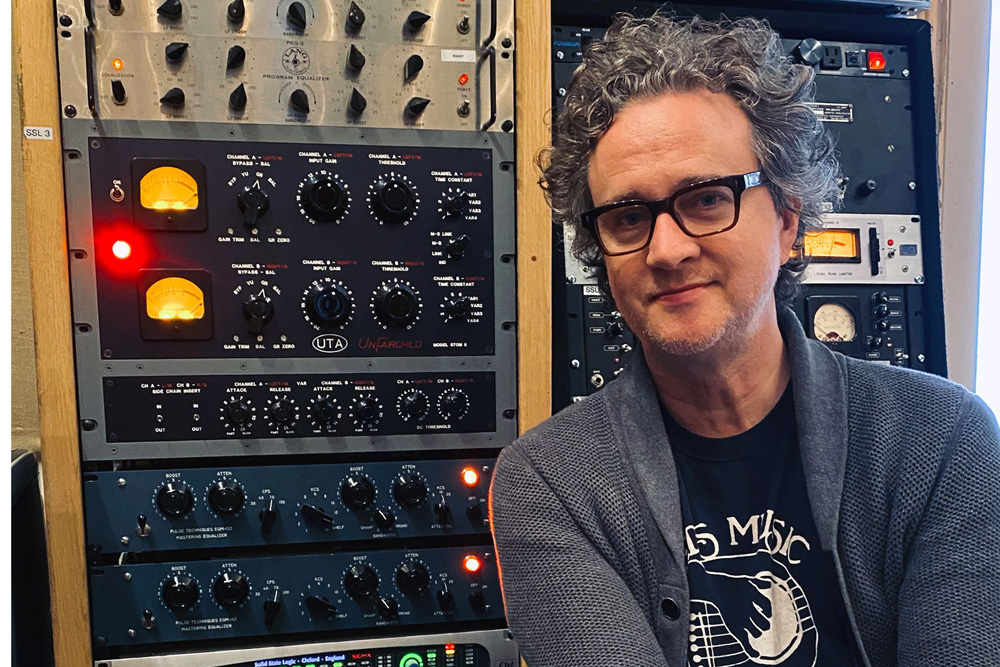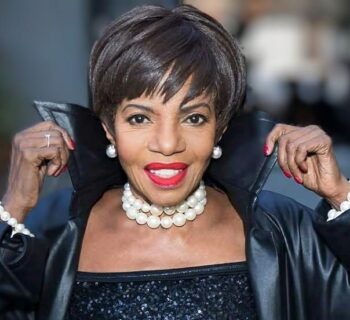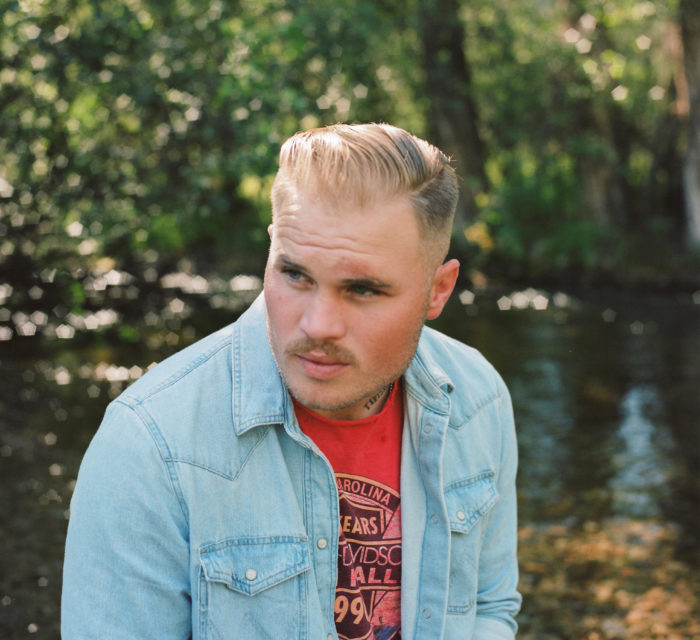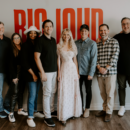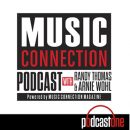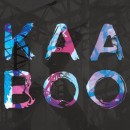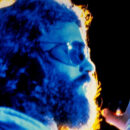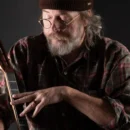Before you even think about creating a release strategy that will give your album the recognition it deserves, you need to first figure out yourself. The one major thing that separates the artists who have diehard fans from those who have merely passive listeners––or worse, pity supporters––is one thing: I, Artist.
We’re all artists. We create art. But to become an Artist with a capital A requires a helluva lot more than just “great music.”
So how do you go from an artist to an Artist? Of course, creating exceptional music is step one. But every great artist can do this. You need to showcase that you are so much more than just someone who can make great music.
Bob goes to work embodying the role of Company Man. He wears slacks, fancy shoes and a neatly pressed button-down shirt. He is cleanshaven, wears expensive cologne and his hair style is straight out of a Brooks Brothers catalog. When he walks into a conference room, he signals to everyone that Bob means business—of the office variety. He speaks with perfect diction. Looks people dead in the eye when he shakes their hand firmly. He performs in the conference room masterfully. As he presents his slide deck, he can answer everyone’s questions with prowess and depth. He has worked out every angle and has thought through his concepts to their core. Not a hole to be poked. His coworkers leave the conference room inspired and impressed. Bob plays the role of Company Man flawlessly. He is cherished and rewarded. A promotion is in Bob’s future.
Now, what does Bob the Company Man have to do with you the Artist? If you want to be an Artist with a capital A you need to embody the role of Artist to the core. Just like Bob had to learn how to dress, speak, present and interact with colleagues, you have to learn how to embrace your inner Artist.
Society encourages conformity. Falling in line. Keeping your head down. But Artists are leaders. Artists help people connect with their souls.
Artists not only tap into a higher consciousness, but guide their followers to explore states of existence outside the daily mundane. Artists inspire those who are willing to open up and challenge their states of being.
The greatest Artists can inspire a generation into action. Or a couple in to love.
Songwriters vs. Musicians vs. Artists
I know what you’re thinking: “I just want to make music and I want people to dig my music. What are you even talking about?” Well, if you want to be a behind-the-scenes songwriter, you can move to a songwriting hub, write a million songs, get a publishing deal and be on your merry way. If you want to be a hired gun, you can follow your employers on stage and play your part in the background, conforming to these Artists’ desires of how you should look, act and play.
But if you want to be the Artist, you can’t just play the part. You need to be the part.
My friend texted me the New York Times’ six-minute Watch How a Pop Hit Is Made doc about Zedd, Maren Morris and Grey’s “The Middle.” If you’ve seen this video, then you may have asked yourself the same thing my friend asked: “Why didn’t Sarah sing it?!” To briefly sum it up, a songwriting team consisting of Sarah Aarons and a couple of producers made a great-sounding demo for a song they wrote called “The Middle,” in an attempt to get it cut by a famous Artist. The video details the process and struggle in trying to find the right singer for the song. Fifteen different famous singers sent in their own demos (auditions) to “win” the song. Every time the producers received another singer’s demo, they felt more discouraged. Zedd recalled: “I’m looking for someone to sing it with the same intention as Sarah sang it. There were months we almost gave up because no one could sing it properly.”
So my friend understandably wondered why not just have the best singer sing the damn song? She wrote it!
The simple answer is, she was not the best vessel to deliver this message. Sure, Sarah has a voice perfect for the song and is an undeniable hit songwriter, but she is not an Artist with a capital A. She is an artist, of course. But she may not be ready or prepared (or have the desire) to lead a generation.
What does this all mean? Why is this important? If someone digs “that one song” and they start exploring who the artist is, they start down a rabbit hole of information. If all of the socials are disjointed and confusing, the bio is bland and reveals nothing of interest or substance, and the photos and videos are forgettable, that potential fan will lose interest and move on. However, if this person unveils a beautiful, enticing, enriching and inviting world the Artist has created, that potential fan may turn into a hardcore, card-carrying member of the Artist’s fan club for life.
Fans connect with Artists who help them reveal truths about themselves.
Tons of people have great voices. Tons of people write great songs. Very few, however, are Artists who can bring their followers to spiritual heights. If it sounds cult-like, well, it kind of is. That’s why people pay so much to attend huge concerts. It’s not because they like “that one song,” it’s because they love the Artist and everything she stands for. And they want to join their fellow congregants in the church of that Artist for a night—levitating and connecting.
Creating the Artist World
So, you have to create your Artist world. Everything should be filtered through the lens of the Artist. You the Artist. Everything needs to be cohesive. If it’s not, you will confuse your audience and they will move on. But how do you do this? There are a few concrete steps you can take to help you grow.
Step 1: The Artist Vision
Just like politicians don’t begin their campaigns without first working out their message and platform, you should not begin the release strategy without working out yours as well. What do you stand for? What do you stand against? What do you believe in?
I encourage you to create a My Vision document. List about 20 key words and phrases that you think the project is all about. Thoughtful, Playful, Fun, Aggressive, Heart-warming, Angsty, Sensitive, Hip, Brash, Sexual, Political, Activist, Coming of Age, Reflective, Colorful—you get the idea.
Once you have these keywords, make another list of what the project is not about. And then start free-writing. Tell the story of the project. Have fun with it. You can always update this, and it will always evolve as you evolve as an Artist. This exercise is just for you. These lists and writing samples aren’t meant to be public.
Your Vision should feel like your music.
Step 2: The Artist Aesthetic
Defining your Artist aesthetic is crucial. It’s the first glimpse into your world. The first touch. People remember visuals a lot more than they remember sounds. Your aesthetic is so much more than your image. Your image is a part of your aesthetic. The project aesthetic ties everything together.
The aesthetic should feel like your Vision. And should feel like your music. Are you seeing a pattern here?
The easiest way I’ve found to help solidify an Artist aesthetic is by utilizing Pinterest. First, create a “Vibe Board.” The Vibe Board is the main hub other boards will stem from. Pin images to the Vibe Board that feel like your project. Everything and anything. Photographs, landscapes, colors, fashion spreads, logos, album covers, t-shirt designs. Go outside the world of music for this. It’s more about capturing a vibe, feeling and energy than trying to find similar images in the world of music. You could save a photo of a ballroom dancer, an orchestra at Carnegie Hall and a painting from the Sistine Chapel. A photo of a model in a magazine and print of a candle. Don’t rush this process. It should take you a few weeks at least, if not a few months.
Once you feel good about the Vibe Board, create more boards: Photo, Live, Fashion/Clothing, Music Video(s), Single Release, etc.
Your Photo Board may pull a few photos from the Vibe Board, but this board should only contain photos of people. Only pin the photographs you like the look and feel of. How they were shot. The energy you get from them. This is the board that you send to your photographer before a photo shoot. The biggest mistake bands make is that they lock in a great photographer and leave it up to her to guide the vision of the band. No one understands your project better than you. If you leave the visual direction up to someone else, they may come up with something completely off base. But it’s not their fault. They have not been given proper direction. So send them your Photo Board.
Once you have your aesthetic on point, everything visual will fall into place. You’ll never be at a loss for what to wear on stage or at a photoshoot, or what to post to Instagram or your website. You will have no problems tossing away album cover or music video ideas if they don’t fit within the aesthetic of the project.
The aesthetic is just a visual way of communicating your vision. It’s an easy way for fans to enter your Artist world.
Step 3: The Artist Story
Yes, we are complex human beings with a million different stories, but, as we’ve established, people are not following you because they know or understand you as a complex human being––it’s because they love you as an Artist. You need to come up with the most captivating story that feels like your music, your vision and your aesthetic. It should all make sense. Your story will evolve over the course of your career. Each huge release is a good time to rethink and rewrite your Artist Story. You need a main story of who you are as an Artist. The one thing people will remember about you. And you’ll also need a story, per release, about the material—whether it’s a song, album, music video or event.
The Live Show
When you put on a live show, you’ll have your aesthetic (and outfits) worked out from the Live Board. It should feel like your vision, aesthetic, story and recordings.
Staying Authentic
You may be feeling that this is all a bit too calculated and manufactured for your liking, but on the contrary, these are just tools to help you solidify your own vision. And your Artist World. Nothing will be fake or disingenuous. Everything will be honed and pointed. When someone dips their toes into your world because one of your songs came up on their Discover Weekly, they will be so enamored and connect instantaneously on such a deep level that they will dive in headfirst and forget to come up for air until they are gasping for the mundane once again.
Separating the Artist from the Person
We are all complex humans with varying states of being. Some days we fully embody the art—especially while writing, recording or performing. Some days we play the role of Bob the Company Man while at the day job. Some days we play the role of mother, daughter, sister, brother, father, son, aunt, uncle, niece, nephew, student, teacher, friend.
As the Artist, you should not showcase every aspect of your being. It would be pretty odd if your band website and socials were all about your best friend—her beautiful family and home, with stories and accompanying photos of how you’re always there for each other, through thick and thin. Photos and videos of the trips you’ve been on—overseas and around the neighborhood. With a section devoted to her and her boyfriend that includes a full blog entry of their most recent vacation.
This, of course sounds absurd, and I know you would never do this with your digital music profile, but you embody this when playing the role of Friend in your daily life. When you have your Friend hat on, you are all in. You are there for your friend. Her family and her significant other.
But as Artist, you don’t need to showcase your world as Friend.
Now, this is not merely about what you can or cannot show on social media. It’s about how best to showcase you as the Artist. So that when potential fans enter your world, it’s understood and cohesive. Can you have photos of you and your friends, family, what have you? Maybe. If it’s in line with your Artist Vision, Aesthetic and Story.
Singer-songwriters struggle more than most with what to share with the world via social media. Because their birth name is the name of the project, it can feel disingenuous not to show all of you. But no fan is following you the Artist because you are an amazing Friend (son, daughter, teacher, mother, uncle, etc.). That’s why your friends stick around. Not your fans.
If you’re a solo artist, it’s a lot easier to create a different Artist name. What Josh Tillman did with Father John Misty. Justin Vernon did with Bon Iver. Stefani Germanotta with Lady Gaga. Lizzy Grant with Lana Del Rey. Austin Post with Post Malone. Abel Tesfaye with The Weeknd. Donald Glover/Childish Gambino. Andrew Cohen/Mayer Hawthorne. David Jones/David Bowie. Garrett Borns/Borns. Claire Boucher/Grimes. Kelsey Byrne/Vérité. Brandon Paak Anderson/Anderson Paak. Sarah Winters/Vox. The list is endless.
Creating an artist project with a new name enables you to separate you, the person, from you the Artist. This doesn’t mean you have to change your name. It’s just easier.
Whether you change your name or not, whether you’re a solo artist or a band, you need to filter everything through your Artist persona. Everything you put out from music, videos, photos, social posts, interviews, performances, email blasts, everything, is as the Artist.
Matt Nathanson does a great job of this. His birth name is Matt(hew) Nathanson. He grew up as Matt Nathanson. Went to school and had jobs as Matt Nathanson. He’s a singer-songwriter whose stage persona is equal parts comedy and music. He is fun, outgoing, hilarious, positive, uplifting, sensitive and down to earth. His Artist persona is just this. It’s not some crazy alter ego. People love Matt Nathanson the Artist because he showcases this self to the world consistently. As a person, is he ever sad, angry, disgusted? Does he go to the gym? To the grocery store? Of course! He’s human. But if he only showed his sad, angry, sweaty self to the world, his fans would drop off like flies. You understand Matt Nathanson the Artist. He’s not being inauthentic by not sharing the parts of his (human) self that don’t fit in his Artist persona.
Just like you, the Dutiful Employee, at your day job don’t get sloshed and put on a strip tease in front of your boss (even though you may do so in other situations with other crowds), you, the Artist, need to play the part of Artist for your music career.
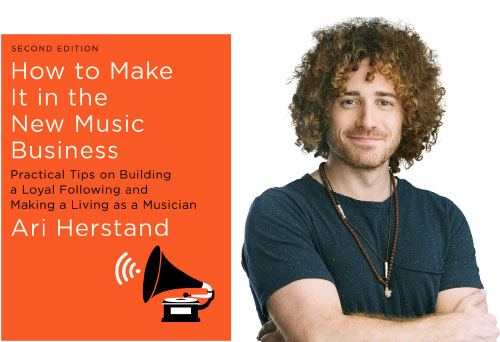
ARI HERSTAND is the author of How To Make it in the New Music Business (second edition), a Los Angeles based musician and the founder of the music business education company and blog Ari’s Take. Follow him on Instagram @ariherstand.



